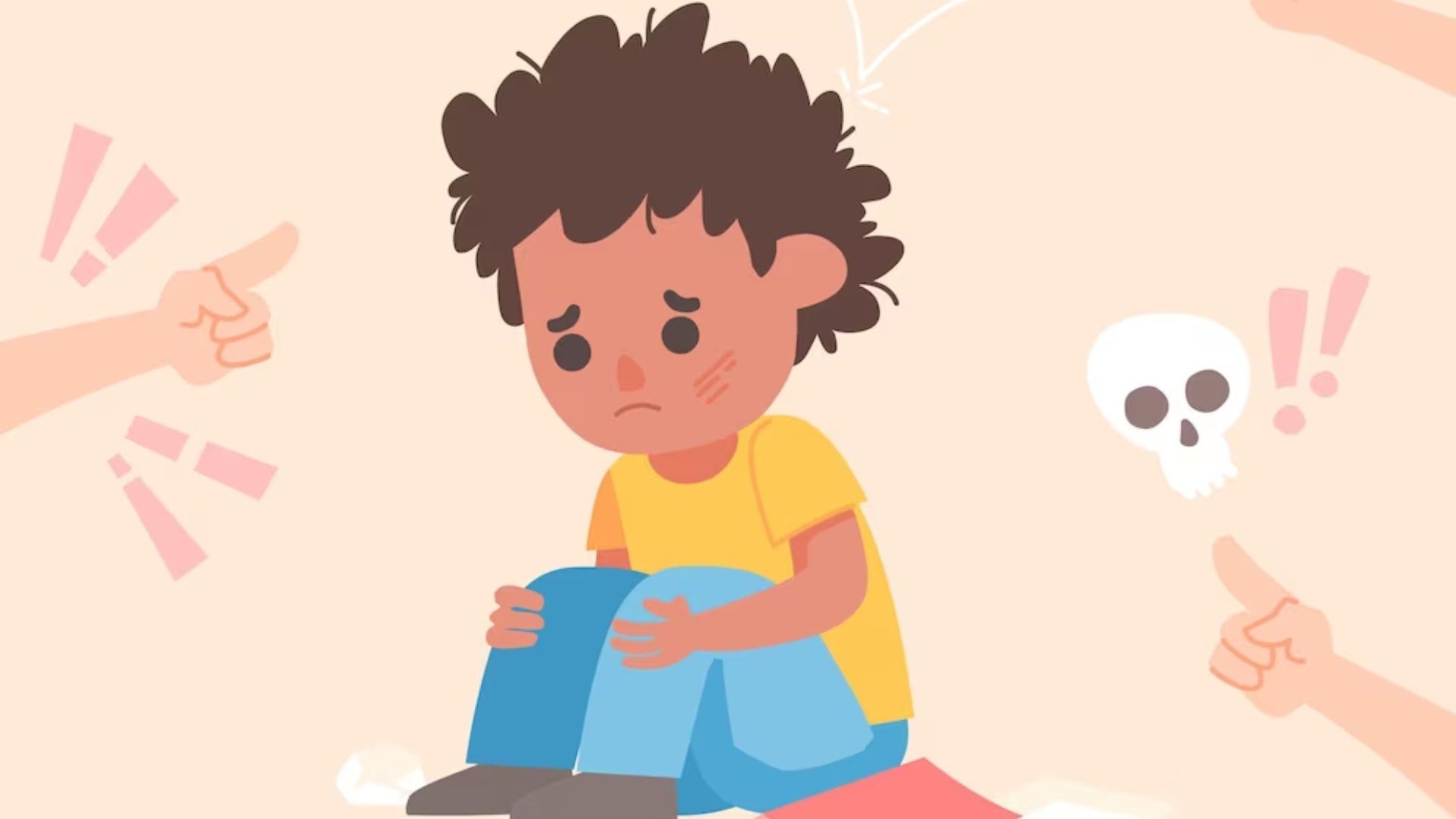Last updated on April 16th, 2025 at 05:29 pm

Globally, a large number of youngsters suffer with Attention-Deficit/Hyperactivity Disorder, or ADHD. To properly assist and treat children with ADHD, parents and clinicians must have a thorough grasp of the disorder. By guiding you through its forms, symptoms, diagnosis, treatment options, and management measures, this blog article seeks to shed light on the numerous facets of ADHD in children.
ADHD Full Form
Let us first define ADHD before we go anymore. Attention-Deficit/Hyperactivity Disorder is known by its abbreviation, ADHD. This name encapsulates the main difficulties that people with this illness have, which include issues with impulsivity, hyperactivity, and sustained concentration.
What is ADHD?
The most common symptoms of ADHD, a developmental condition, are impulsivity, hyperactivity, and persistent patterns of inattention that impede development or functioning. Even though it is frequently diagnosed in children, ADHD can persist into maturity. Children diagnosed with ADHD may face difficulties in the classroom, difficulty socially with their peers, and display actions that are out of character for their age.
ADHD in Children
unknown to most, ADHD in children occurs frequently. Approximately 6.1 million children in the United States have been identified as having ADHD, according to the Centers for Disease Control and Prevention (CDC). The first step to supporting your patient or kid in leading a happy life is understanding this condition.
Types of ADHD
There is not a single treatment plan for ADHD. There are three primary varieties, each with unique traits:
1. Inattentive Individual
This kind kid usually has trouble paying attention. They could struggle to maintain concentrate, follow to directions, or plan activities. They could come out as careless in day-to-day tasks because they are frequently easily distracted.
2. Impulsive-hyperactive type
Although not always inattentive, this kind of behavior is marked by high levels of impulsivity and hyperactivity. Children may have trouble waiting their turn, be consistently nervously find it difficult to stay sitting, and talk excessively.
3. Combination Type
Both hyperactivity-impulsivity and inattentional symptoms are present in the mixed kind. This is the most prevalent type of ADHD, and it comes with a wide range of difficulties for those who have it.
ADHD Symptoms
Timely intervention for ADHD requires an understanding of its symptoms. Consider looking out for the following typical signs:
1. Carelessness
Inability to focus during games or other duties
Repeated errors brought on by negligence in assignments or other tasks
Having trouble planning assignments and activities
2. Over-reactivity
Erratic hand and foot tapping or fidgeting
Incapacity to stay seated when it is anticipated
Running or scaling in an unsuitable environment
3. Leniency
cutting people off in games or chats
Waiting for their time is tough.
Before a question is fully asked, providing an answer
ADHD Diagnosis
ADHD diagnosis requires a thorough assessment by a medical specialist. This procedure consists of:
1. Health History
A comprehensive examination of the your kid’s medical history, family background, and developmental milestones is necessary. It is helpful to exclude other potential answers of the kid’s conduct by knowing the context of it.
2. Behavior Evaluations
Parents, teachers, and occasionally kids actually fill out standard surveys and behavior rating scales, which offer valuable information about the frequency and intensity of symptoms.
3. Clinical Evaluation
It is essential to have a clinical examination conducted by an ADHD-specialized physician, psychologist, or psychiatrist. This could entail conducting interviews and watching the child’s behavior in various contexts.
ADHD Treatment in Children
Behavioral therapy, medication, and educational activities are commonly used in the treatment of ADHD:
1. Counseling for Behaviors
The goal of behavioral treatment is to provide kids new behaviors and skills to help them control their symptoms. Commonly employed strategies include time management, organizing abilities, and encouragement from others.
2. Prescription drugs
The medication and substances are examples of stimulant drugs that are frequently administered to assist manage symptoms. When stimulants are ineffective or have negative side effects, non-stimulant drugs can also be employed.
Educational Support 504 Plans or Individualized Education Programs (IEPs) can offer adjustments in the classroom, like more time for exams, a quiet area to work in, and breaks to control hyperactivity.
Strategies for Managing ADHD in Children
A comprehensive strategy is needed to manage ADHD. These are a few successful tactics:
1. Customs and Organization
Creating a regular daily schedule eases anxiety and enhances focus in children with ADHD by letting them know what to expect.
2. Clear Expectations
Children are better equipped to accept expectations when they are given clear, attainable guidelines for behavior and work.
3. Inspiring Incentives
When youngsters receive praise or tiny prizes for good behavior, it may encourage them to repeat similar actions.
Impact of ADHD on Children’s Live

A child’s life is impacted by ADHD in a number of ways, such as
1. Academic Achievements
Students with ADHD may find it difficult to stay focused during class, finish assignments, and obey directions.
2. interpersonal connections
Children who struggle with impulse control and hyperactivity may find it difficult to establish and sustain friendships.
3. Dynamics of Families
Family ties may be strained by the demands of controlling ADHD. Parents could feel worn out and frustrated, while siblings might feel ignored
Supporting Children with ADHD in School
When it comes to helping kids with ADHD, teachers and other school personnel are essential. Among the successful tactics are:
1. Facilities for Classrooms
Academic success for children can be facilitated by offering accommodations such special seats, visual aids, and adapted assignments.
2. Working together
It is ensured that all parties are collaborating to assist the child’s needs when parents, educators, and healthcare providers have regular communication.
3. Social Skills Training
Programs that teach social skills can aid children with ADHD in comprehending and navigating social situations more effectively..
Hyperactive Child vs Hyperactive Behavior
It’s critical to differentiate between a child who is merely acting hyperactively and one who has ADHD:
1. Time and Predictability
The symptoms of ADHD are widespread and persistent. They need to have a major influence on the child’s life and stay there for at least six months.
2. Situational
Children with attention deficit hyperactivity disorder (ADHD) exhibit symptoms in a variety of contexts, including social settings, schools, and homes.
3. Level of severity
Compared to typical children of the same age and developmental stage, the symptoms of ADHD are more severe.
Conclusion
Although children with ADHD present special challenges, parents and pediatricians can effectively support affected children if they have the necessary information and resources. Fostering a positive outcome requires an understanding of the types, symptoms, and available treatments. We can assist students with ADHD in realizing their full potential by putting management solutions for ADHD into practice and offering support in the classroom. See a healthcare provider about customized tactics for your child or patient if you’re in need of more direction.
Never forget that children with ADHD can have a major improvement in their lives with early intervention and ongoing assistance.
